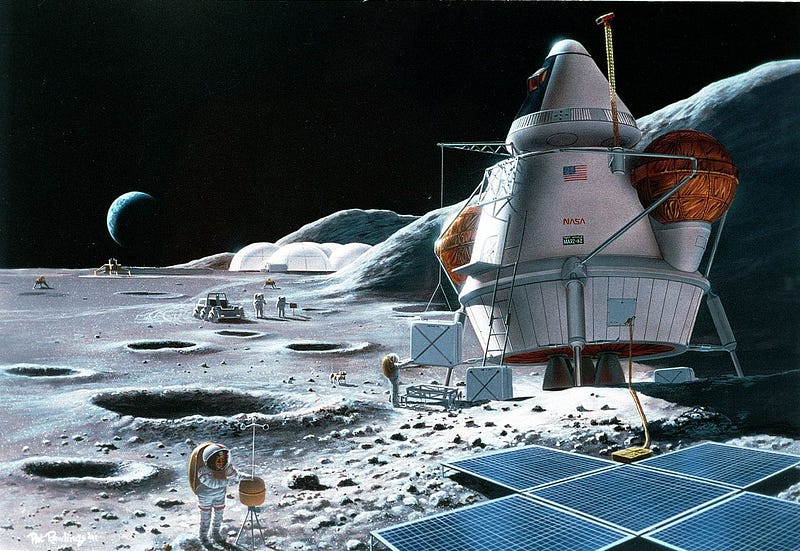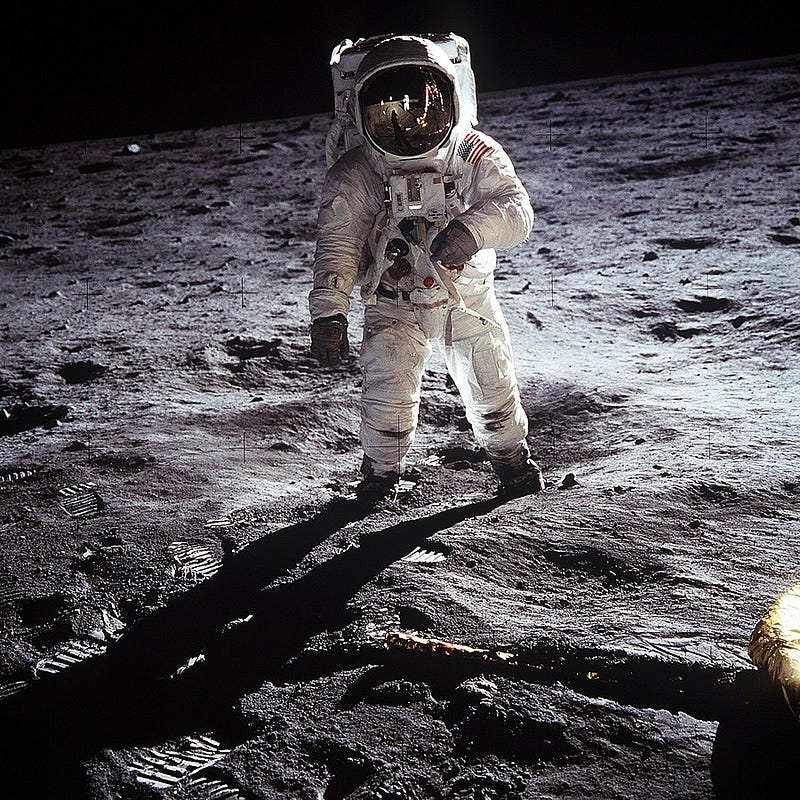Exploring the Challenges of Human Space Exploration
Written on
Chapter 1: The Quest for Space Colonization
Should humanity aim to conquer space? Beyond our planet, numerous hazards threaten astronauts. Why, despite decades of exploration, do we still lack a permanent base on the Moon, and why are manned missions to Mars continually delayed? The answer lies in the complexity of establishing safe conditions in the perilous environment of space. Undertaking manned space missions represents one of the most formidable challenges humanity has faced since the great age of exploration.

[Photo: NASA/SAIC/Pat Rawlings, Public domain, via Wikimedia Commons]
In 1953, Wernher von Braun, a former SS officer, released a novel titled “The Mars Project,” which included technical insights on how to facilitate human travel to another planet. When will we finally set foot on Mars? After World War II, von Braun moved to the United States and became a prominent figure in the scientific community, even collaborating with Walt Disney. Many believed we were on the brink of establishing a Moon base and venturing to Mars.
Seventy years have passed since the publication of his book, and over fifty years since Apollo 17 astronauts last walked on the Moon. Yet, we still lack a foothold on any celestial body. Our explorations are limited to robotic missions rather than manned ones. Does this imply we are incapable of realizing the visions of pioneers like von Braun?
Section 1.1: The Early Days of Manned Missions
Initially, space programs were developed with a focus on engineering. The goal was to create a spacecraft and rocket capable of achieving the necessary velocity. Astronauts were often test pilots, trained to handle extremely hazardous situations.
The duration of early manned space flights ranged from a few hours to several days, with lunar missions lasting just over a week. This can be compared to a brief camping trip, while our current ambitions resemble constructing an entire city in a desert.

[Photo: NASA/SAIC/Pat Rawlings, Public domain, via Wikimedia Commons]
Section 1.2: Surviving the Perils of Space
Space missions present an extraordinary challenge; astronauts must adapt to an environment where dangers abound. Our survival will hinge on technology—suits must safeguard us against low pressure and extreme temperature changes, while we must secure breathable air, sleeping arrangements, and food supplies.
Relying solely on resupply missions from Earth is impractical. We must learn to harness resources found on other celestial bodies. Thus, before embarking on a mission to Mars, we must first establish a presence on the Moon.
Chapter 2: The Challenges of Lunar Settlement
The construction of a lunar base is slated to commence later this decade, serving as a critical test of our technical abilities. What operates effectively on Earth may not yield similar results in space due to varying conditions.
While lower gravity could facilitate movement in heavy suits, it may hinder mining equipment essential for extracting water and minerals necessary for sustainable living. Research on growing protein-rich crops in space is ongoing aboard the International Space Station, but adapting these methods to lunar or Martian environments presents significant hurdles. The first settlers will need to possess resilience, as failures are likely to outnumber successes.

[Photo: Neil A. Armstrong, Public domain, via Wikimedia Commons]
Section 2.1: The Psychological Impact on Astronauts
Physical and psychological well-being is another critical consideration. Humans evolved under Earth's gravity, which ensures proper blood circulation and bodily functions. Astronauts on the ISS must exercise for at least two hours daily to maintain their health, yet they still return to Earth in weakened states. To send a crewed mission to Mars, we must address the challenge of artificial gravity; otherwise, astronauts may arrive in poor physical condition.
Moreover, the psychological strain of being isolated in demanding and hazardous conditions far from Earth can lead to emotional challenges, even for the most robust individuals. As astronaut Scott Kelly noted, the view of Earth from the ISS is comforting, but the experience of seeing our planet as a mere dot in the vastness of space is unprecedented. We are still uncertain how individuals will cope with this perspective.
The first video, "5 Hazards to Sending Humans to Deep Space," discusses the potential dangers astronauts may face during deep space missions. It highlights the technical and environmental challenges that need to be addressed to ensure safety.
The second video, "Why is it so hard to land on the moon?" explores the complexities involved in lunar landings, reflecting on how we accomplished it over fifty years ago with the Apollo program.